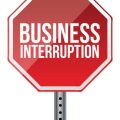Understanding Your Career Gap
Explore the Reasons Behind Your Career Break
Taking a career break is more common than you might think, and there are plenty of valid reasons for stepping away from the workforce. Maybe you took time off to raise children, care for a family member, travel, focus on your health, or pursue further education. Understanding and owning your reason is the first step to moving forward confidently.
| Common Reasons for Career Breaks | How to Frame It Positively |
|---|---|
| Parental leave or caregiving | Developed strong multitasking and time management skills |
| Pursuing education | Gained new knowledge and relevant certifications |
| Personal health or wellness | Demonstrated resilience and commitment to self-improvement |
| Travel or volunteering | Enhanced cultural awareness and adaptability |
| Relocation or supporting a partner’s career | Became flexible and skilled at managing change |
Addressing Potential Employer Concerns
Employers may have questions about your time away from work. They might wonder if your skills are up to date or if you’re truly ready to return. Be proactive by preparing clear explanations that highlight what you’ve learned and how you stayed connected to your industry. If possible, mention any freelance work, volunteering, online courses, or professional networking you did during your break.
Tips for Addressing Concerns:
- Stay Honest: Briefly explain why you took a break without oversharing personal details.
- Highlight Transferable Skills: Show how your experiences during the gap make you a stronger candidate.
- Mention Continued Learning: Point out any workshops, certifications, or online classes you completed.
- Be Ready with Examples: Share stories that demonstrate growth, problem-solving, and resilience.
Reframing Your Experiences to Show Growth and Resilience
Your career break doesn’t define you—it’s just one part of your story. Use it as an opportunity to show employers how adaptable and resilient you are. Employers value candidates who can overcome challenges, learn from different life experiences, and bring fresh perspectives to the team. By framing your break as a period of personal development, you help hiring managers see the real value you offer beyond just your resume.
Assessing Your Skills and Setting New Goals
After taking a long break from your career, it’s natural to wonder where you fit into today’s job market. The first step is to take an honest look at the skills you currently have, figure out which ones can transfer to new roles, and set realistic goals for your next chapter. Let’s break down how you can do this in a simple, practical way.
Evaluate Your Current Skill Set
Start by listing out all the skills you’ve gained through previous jobs, volunteer work, side projects, or even personal experiences. Don’t underestimate soft skills like communication, organization, or problem-solving—they’re just as valuable as technical abilities! Here’s a quick table to help you organize your thoughts:
| Experience | Skills Learned | Soft/Hard Skill |
|---|---|---|
| Previous Job (e.g., Office Manager) | Time management, Microsoft Office, Team leadership | Soft & Hard |
| Volunteering (e.g., PTA Chairperson) | Event planning, Communication, Budgeting | Soft & Hard |
| Personal Projects (e.g., Home Renovation) | Project management, Negotiation, Scheduling contractors | Soft & Hard |
Identify Transferable Skills
Your time away from the workforce may have helped you develop new skills that employers value. Transferable skills are abilities you can use in different jobs and industries. For example:
- Communication: Experience leading meetings or organizing groups translates well to many office settings.
- Problem-solving: Managing household logistics or community projects shows adaptability and critical thinking.
- Technology: If you’ve learned new software for personal reasons, that could be valuable in a professional setting.
How to Spot Transferable Skills?
Review job descriptions for roles you’re interested in and highlight the required skills. Match those with your own list. If you see overlap—great! That’s where your transferable strengths shine.
Set Realistic Career Objectives Aligned with Todays Job Market
The world of work changes fast. Take some time to research current trends in your field or any new industries you’re considering. Check out job boards like Indeed or LinkedIn to see what employers are looking for right now.
Create SMART Goals
Aim for goals that are Specific, Measurable, Achievable, Relevant, and Time-bound. For example:
- Specific: “I want to return to work as an administrative assistant.”
- Measurable: “I will apply to five jobs per week.”
- Achievable: “I will refresh my computer skills with an online course.”
- Relevant: “Administrative work uses my organizational strengths.”
- Time-bound: “I will find a new role within three months.”
Your Next Step
This self-assessment is your launching pad. Once you know what you bring to the table and what’s needed in today’s workforce, you’ll feel much more confident moving forward in your career reinvention journey.

3. Upskilling and Bridging the Gap
If you’re looking to relaunch your career after a long break, updating your skills is one of the best ways to make yourself more marketable. Today’s job market values continuous learning, so employers appreciate candidates who show initiative to grow and adapt. Here are some practical ways to upskill and fill any gaps in your knowledge or experience:
Certifications: Earning Credibility
Getting certified in your desired field is a great way to demonstrate your commitment and expertise. Many industries in the U.S. have recognized certifications that can boost your resume, whether it’s in project management (like PMP), tech (such as CompTIA or AWS), HR (SHRM-CP), or marketing (Google Analytics). These programs are often flexible and can be completed online at your own pace.
Popular Certification Options
| Field | Certification | Provider |
|---|---|---|
| Project Management | PMP, CAPM | PMI |
| Technology/IT | CompTIA A+, AWS Certified Cloud Practitioner | CompTIA, Amazon Web Services |
| Human Resources | SHRM-CP, PHR | SHRM, HRCI |
| Marketing | Google Analytics Certification | |
| Finance & Accounting | CFA Level 1, QuickBooks Certified User | CFA Institute, Intuit |
Workshops and Short Courses: Quick Skill Boosts
Many community colleges, local organizations, and libraries offer affordable workshops and short courses on everything from public speaking to coding basics. These are excellent for brushing up on key skills or learning about new trends in your industry without committing to a full degree program.
Where to Find Workshops and Courses:
- Community Colleges: Check their continuing education departments.
- Public Libraries: Many host free or low-cost training sessions.
- Meetup.com: Find professional groups offering skill-building events.
- SCORE.org: Offers business workshops for aspiring entrepreneurs.
Volunteer Work: Gaining Hands-On Experience
If you’ve been out of the workforce for a while, volunteering is a smart way to bridge the gap on your resume. Nonprofits and community organizations need people with skills in administration, event planning, social media, IT support, and more. Volunteering not only helps others but also lets you network and gain references for future job applications.
Examples of Volunteer Roles That Build Skills:
| Skill Area | Sample Volunteer Role |
|---|---|
| Project Management | Coordinating charity events or fundraisers |
| Technical Support | Troubleshooting computers for local nonprofits |
| Marketing & Social Media | Managing social platforms for community groups |
| Teaching & Training | Tutoring students or leading adult workshops |
| Administration & Finance | Bookkeeping or office support at local charities |
Online Learning: Flexibility and Convenience
The internet is packed with resources to help you learn new skills from home. Platforms like Coursera, Udemy, LinkedIn Learning, and edX offer courses in almost every subject imaginable—often taught by professors from top U.S. universities or industry professionals. Many courses are self-paced and affordable; some even provide certificates upon completion.
User-Friendly Online Platforms:
- Coursera: University-level courses in business, tech, and more.
- Udemy: Affordable classes on everything from Excel to graphic design.
- Khan Academy: Free learning on foundational topics.
- LinkedIn Learning: Business-focused video tutorials with certificate options.
No matter which route you choose—or if you combine several—you’ll be better prepared to return to the workforce with confidence. By investing time into upskilling through certifications, workshops, volunteering, or online learning, you’ll show employers that you’re proactive and ready for new challenges.
4. Re-entering the Job Market
Modern Job Search Strategies
Jumping back into the workforce after a long break can feel overwhelming, but today’s job market offers new and effective ways to find opportunities. Online job boards like Indeed, Glassdoor, and LinkedIn are great places to start. Don’t forget about networking—many jobs are filled through personal connections. Consider joining industry-specific groups on Facebook or Meetup, attending local networking events, or reaching out to former colleagues for referrals. Volunteering or freelancing can also help you rebuild your confidence and gain up-to-date experience.
Writing a Resume That Works for Career Returners
When updating your resume, focus on transferable skills gained during your break, such as project management from organizing community events or communication skills from volunteer work. Address your career gap directly with a brief statement in your summary section. Highlight recent training, certifications, or online courses you’ve completed to show you’re staying current. Here’s a simple way to organize your resume:
| Section | What to Include |
|---|---|
| Summary | Mention your previous experience and explain your readiness to return. |
| Skills | List both technical and soft skills relevant to the roles you want. |
| Experience | Include paid work, volunteer positions, freelance gigs, and relevant activities during your break. |
| Education & Training | Add any recent courses or certifications you’ve completed. |
Leveraging LinkedIn for Your Comeback
Your LinkedIn profile is often the first thing employers see. Make sure it’s up-to-date with a professional photo and a headline that highlights the type of role you’re seeking. Write an honest but optimistic summary about your career break and what you’re looking for next. Connect with former coworkers, join LinkedIn Groups in your industry, and regularly engage by commenting on posts or sharing articles. This activity keeps you visible in recruiters’ searches.
LinkedIn Profile Checklist for Career Returners
- Professional headshot photo
- Clear headline stating your target position/industry
- Summary mentioning your break and current goals
- Detailed experience section (including volunteer work)
- Relevant skills listed and endorsed by others
- Active participation in groups and discussions
Acing Interviews with Confidence
The thought of interviews might be nerve-wracking after a career break, but preparation is key. Practice answering common questions like “Tell me about yourself” or “What did you do during your career gap?” Be honest about your time away but focus on what you learned and how it makes you a stronger candidate. Use the STAR method (Situation, Task, Action, Result) to share examples from both your past jobs and experiences during your break. Remember: confidence comes from preparation and practice.
5. Building Your Professional Network and Support System
Getting back into the workforce after a long break can feel overwhelming, but you don’t have to do it alone. One of the most effective ways to boost your confidence and open doors is by building a strong professional network and support system. Here’s how you can make meaningful connections, find mentors, and use resources designed for career returners.
Why Networking Matters
Networking isn’t just about exchanging business cards or adding connections on LinkedIn. It’s about building genuine relationships with people who can offer advice, encouragement, job leads, or simply share their own experiences. Many jobs in the U.S. are found through personal connections rather than online applications, so investing time in networking pays off.
How to Build Meaningful Relationships Through Networking
Start Small and Be Genuine
You don’t need to know hundreds of people to have a strong network. Start with those you already know—former coworkers, friends, neighbors, or members of community groups. Let them know you’re reentering the workforce and what kind of roles interest you.
Attend Local and Virtual Events
Look for industry meetups, job fairs, workshops, or webinars in your area. Many organizations also host virtual networking events that make it easy to connect from home.
Get Involved Online
Join professional groups on LinkedIn or Facebook where people share job postings and advice. Don’t be afraid to introduce yourself and ask questions—most communities are supportive of returners.
| Networking Method | How It Helps | Where to Start |
|---|---|---|
| Coffee Chats | Builds one-on-one relationships | Reach out to former colleagues for a casual meet-up |
| Industry Events | Expands your circle and keeps you updated on trends | Check local business groups or Eventbrite for upcoming events |
| Online Groups | Connects you with nationwide professionals and opportunities | Search for LinkedIn groups related to your field |
Tap Into Mentorship Opportunities
A mentor is someone with experience who can guide you as you restart your career journey. They might help review your resume, practice interviews with you, or introduce you to others in your desired field. Many U.S.-based organizations offer mentorship programs specifically for people returning after a career break.
- Score.org: Free mentoring for career development and entrepreneurship.
- Maven Women: Focused on supporting women returning to work through mentorship circles.
- Your local Chamber of Commerce: Often hosts mentorship programs and can connect you with industry leaders.
Access Resources Tailored for Returners
The U.S. has many resources dedicated to helping individuals relaunch their careers:
- Path Forward: Offers paid returnship programs at major companies.
- The Mom Project: Connects caregivers with flexible job opportunities.
- iRelaunch: Provides coaching, events, and job boards focused on career relaunchers.
- AARP Back to Work Program: Especially helpful if youre 50+ and looking for new opportunities.
Create Your Own Support Team
Your support system can include family members, friends, peers who are also returning to work, mentors, or even online forums where people share similar experiences. Regular check-ins—whether over coffee or video calls—help keep you motivated and accountable as you move forward in your journey.


